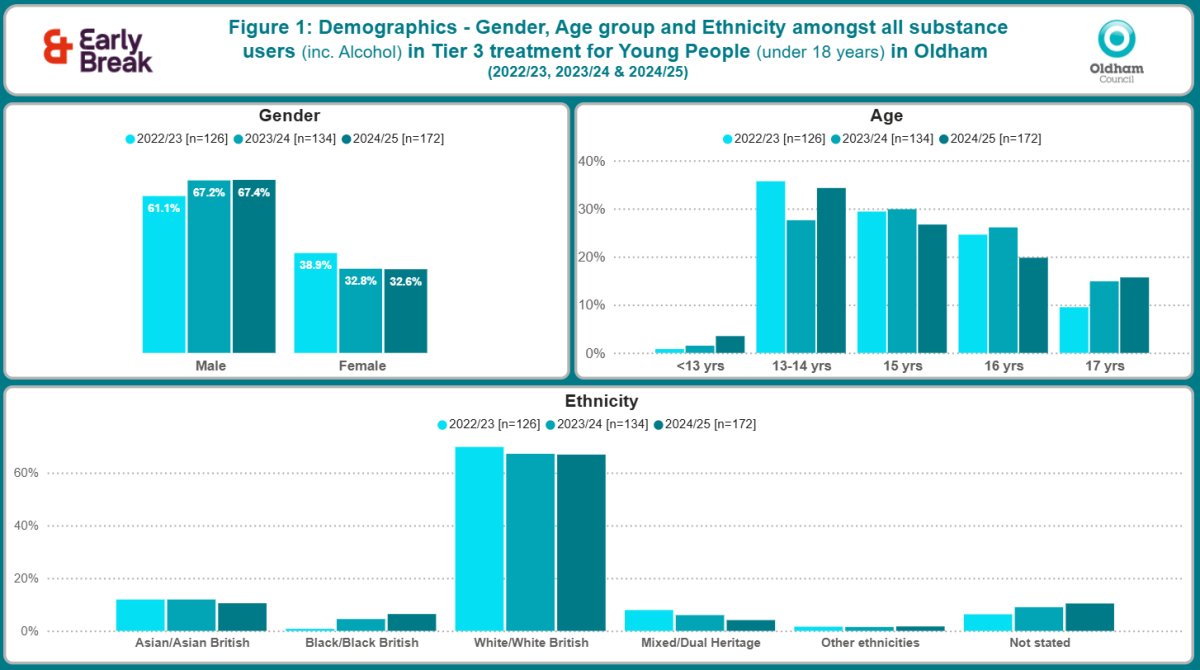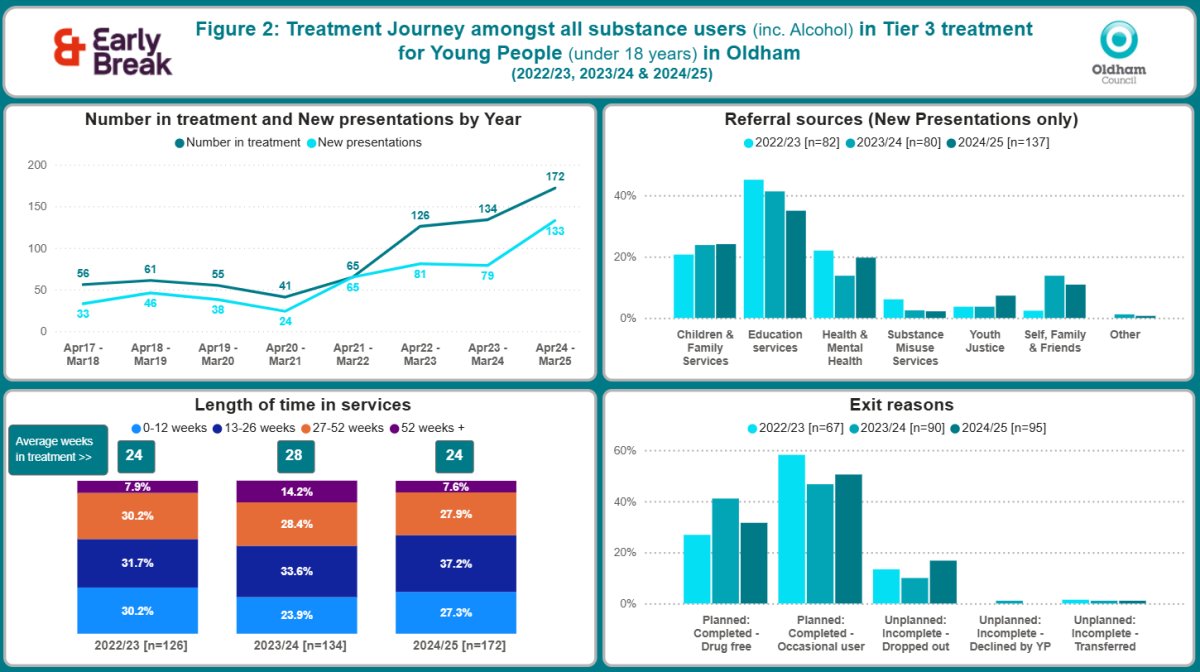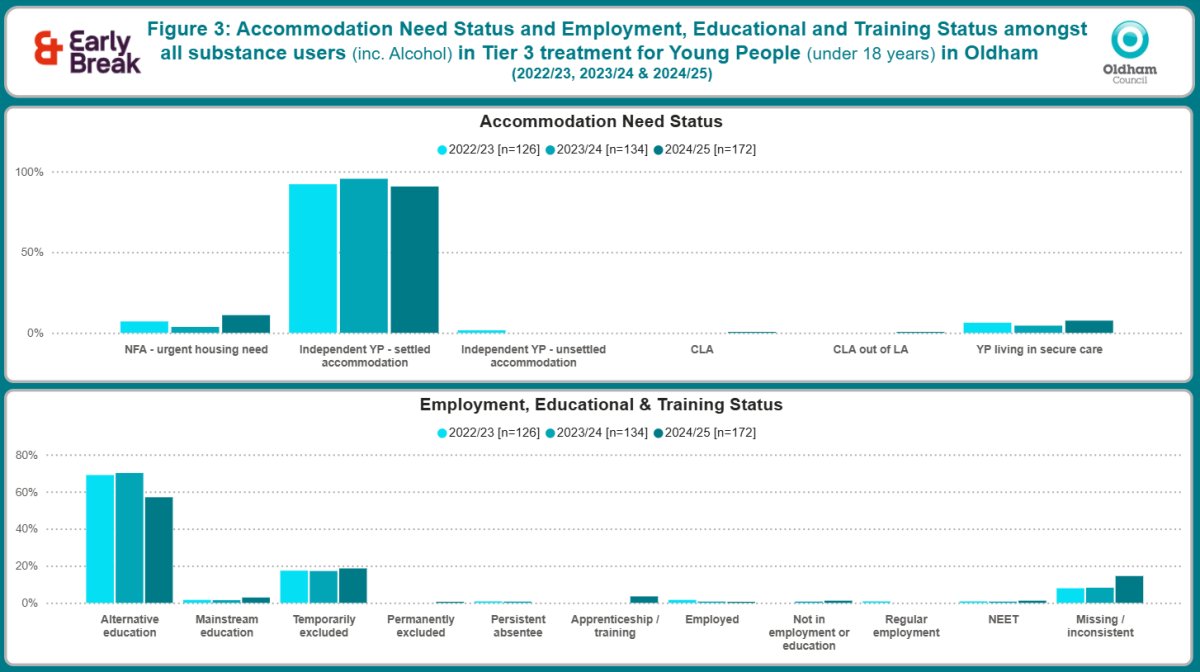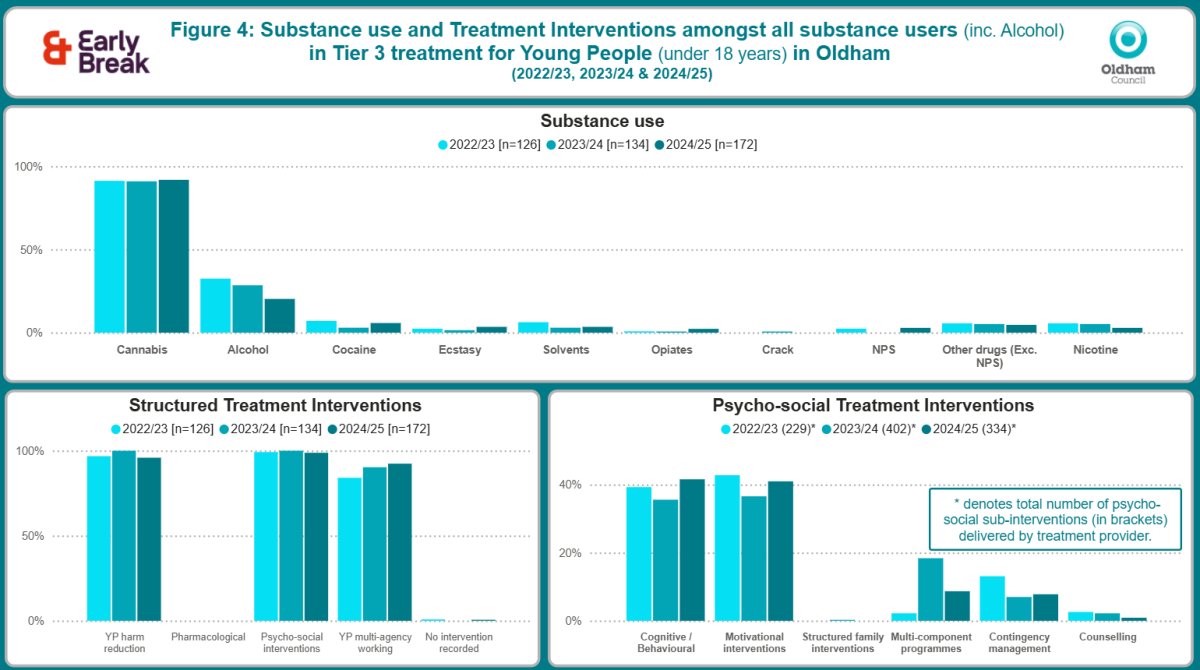Loading...
Young people's alcohol and substance misuse
***Currently being updated (Completion: by 30th Sept)***
Introduction
Substance use amongst young people (under 18 years) carries with it short and long terms risks to health and well-being the impact of which will depend on the substance(s) used and the frequency their use thereof. Frequent use of illicit substances is not a predominant feature of most most young people's lives. For those who do use drugs their orientation is experimental and recreational, usually diminishing by their mid-20s. For some people, however, substance use can become problematic and potentially ascending towards long term heavy use and dependency. Even low level use is not always a protective factor in the context of adulterated substances, purity and the risks of unintentional overdosing.The prevalence of substance use amongst young people is difficult to estimate. This is due to differing approaches and methodologies, variance in the composition of age cohorts and other factors such as access, safe disclosure and the adoption of rigorous checks and balances designed to ensure reliability and validity. These issues are the main reason for prevalence estimates tending to be applied at national level. The main source of substance prevalence estimates can be found in biennial schools survey 'Smoking, drinking and drug use among young people in England' (NHS Digital & Ipsos Mori). This survey, however, only provides data in relation 11 to 15 year olds (Years 7 to 11). Although this age range differs from the 'Under 18s' age cohort that comprise the in-treatment population, profiled below, it does offer a flavour of young peoples experience and encounters with illicit substances, particularly with reference to their availability and frequency of use.
This section contains data, information and a summary profile in relation to the nature and impact of substance misuse amongst young people, under the age of 18 years, in Oldham.
Data Overview
Summary profile of young people in treatment for substance misuse in Oldham
Figure 1 below shows data in relation to the demographic make-up of Oldham’s young people in-treatment population from 2022/23 to 2024/25. In 2022/23 the ratio was 61:39 males to females, in the most recent period of 2024/25 males accounted for more than two-thirds (67%) of the in-treatment population. In terms of ethnicity, the largest concentration can be found amongst young people from ‘White/White British’ ethnicities typically ranging from 67% to 70% of those in treatment. Young people from ‘Asian/Asian British’ backgrounds had the second highest concentration with around 10% to 12%. The proportion of young people from 'Black/Black British' ethnicities has increased almost eight-fold to over 6% while those from ‘Mixed/Dual Heritage background has decreased from 8% to less than five percent. In 2024/25 the proportion of Young People with their ethnicity recorded as 'Not stated' exceeded 10% - the highest rate for many years.

Figure 1 above also shows that the age cohort with the greatest proportion can found amongst 13-14 year olds, averaging 33% across the three census periods, followed by 15 year olds albeit with rates dropping from around 30% towards 27%. The pattern amongst 16 year olds is similar but at lower levels. The age cohort with the largest increases was amongst 17 year olds - up from 9% in 2022/23 to 16% in 2024/25. The number of under 13s has also increased of this period but from lower levels, however any sustained increases amongst such a young cohort are of concern.
The Treatment Journey for Young People in treatment for substance misuse in Oldham
Numbers in treatment and new presentations
Figure 2 below shows the numbers in treatment and new presentations to treatment for substance misuse amongst young people from Oldham from April 2017/March 2018 to April 2024/March 2025. Following a broadly 'plateauing trend' from the earliest census period to March 2021, numbers in treatment and new presentations have increased considerably over the past four years – in both instances the highest levels of treatment engagement in the eight years on view have been recorded. The number in treatment has more than quadrupled while new presentations increased almost six-fold.
Across GM Oldham has the fourth highest rate of young people in treatment services for substance misuse with 2.73 per 1,000 of the 0-17 population. Bolton has the highest with 3.16 and Salford the lowest with 1.17. Oldham’s rate is 25.8% greater than the GMCA average (2.17 per 1,000), 44.4% higher than the North West rate (1.89) and more than double the England average of 1.33.

Referral sources
Figure 2 above also shows referral sources amongst young people newly presenting to treatment services over the past three years in Oldham. In 2022/23 referrals from ‘Education Services’ accounted for the highest proportion with 45%, however, by 2024/25 referrals from this source had dropped by ten percentage points. During the same period referrals from ‘Children & Family Services’ increased modestly from 21% to 24%. ‘Health & Mental Health’ services are currently the third most common referrer with almost 20%. Within this category more than half were ‘hospital’ referrals, accounting for 11% of all referrals – four times the England average of 2.7%. ‘Self, Family & Friends’ currently account for approximately one-nine of referrals while those from 'Youth Justice' in 2024/25 were double the rates for previous two census periods.
Length of time in treatment and treatment exit status
Figure 2 above also shows that on average young people remain in treatment for 24 weeks, four weeks longer than the England average of twenty weeks. Approaching half (44%) of the young people in treatment for substance misuse England are in treatment for '0 to 12 weeks' compared to 27% in Oldham.
Figure 2 above also illustrates treatment exit status amongst those discharged from treatment for young people. In 2022/23 the proportion planned exits completed ‘drug free’ was 27%, increasing one-and-a-half times to 41% in 2023/24 but falling back to 32% in 2024/25 (England average: 35%). Planned discharges where the young person was classed as an ‘occasional user’ decreased from 58% in 2022/23 to 51% in 2024/25 – similar to the England average of 49%. Over the same period unplanned exits where the client ‘dropped out’ of treatment increased from less than 13% to 17% - higher than the national average of 10%.
Accommodation status amongst young people in treatment for substance misuse in Oldham
‘Accommodation status’ amongst Oldham’s young people in treatment for substance misuse is shown in Figure 3 below. In 2022/23 ‘NFA (i.e. No Fixed Abode) - urgent housing need’ was 7.1% dropping to less than five percent in 2023/24. In the most recent period (2024/25) the proportion rose to one-nine (11%) – more than six times the England average of 1.7.%. The vast majority of young people in treatment (typically 90%) described their accommodation as ‘settled’ (England average: 85%).

Education, employment and training status amongst young people in treatment for substance misuse in Oldham
Figure 3 also illustrates the distribution of young people in treatment services in Oldham by ‘Education, Employment and Training Status’ from 2022/23 to 2024/25. In both 2022/23 and 2023/24 the proportion of those indicating they were in ‘Alternative education’ was 69% to 70%%, by 2024/25 such indications fell by one-fifth to 57% (England average: 61%). During the same period indications for ‘Mainstream education’ have been consistently lower than 5%.
Figure 3 above also shows that the proportion of young people experiencing temporary exclusions across the three census periods ranged from 18% to 20% - similar to the national average (17%). The proportion of records with missing data has almost doubled from 8% in 2022/23 to 15% in 2024/25.
Substance use and interventions amongst young people in treatment for substance misuse in Oldham
Substance use
Figure 4 below shows substance use indicated amongst young people in treatment for substance misuse in Oldham 2022/23 to 2024/25. Cannabis is almost ubiquitous in nature with more than nine in ten of this young cohort citing its use. Alcohol is second most commonly recorded substance, however, indications f its use have dropped from 33% in 2022/23 to 20% in 2024/25. Indications of the use of Cocaine (powder) are currently around 6%. From a historic perspective this is very low when to proportions of 16% to 20% as recent as 4-5 years ago.

Treatment interventions for young people in treatment for substance misuse in Oldham
Figure 4 above also shows an overview of structured treatment interventions for young people in treatment for substance misuse in Oldham. ‘YP harm reduction’ interventions ranged from 96% to 100% over the three census periods (England average (2024/25): 75%). The rate for ‘YP multi-agency working’ in Oldham has increased from 84% in 2022/23 to 92% in 2024/25. Again, the most recent rate for Oldham is significantly greater than the England average of 61%.
Rates for ‘Psycho-social interventions’ have been provided for 99% to 100% of Oldham’s young in-treatment cohort and compares favourably, albeit slightly, with the England average of 95% (2024/25).
In Figure 4 the distribution of ‘psych-social sub-interventions’ is also shown for Oldham’s young people in treatment for substance misuse from 2022/23 to 2024/25. It can be observed that over the three census periods on view ‘Cognitive/Behavioural’ sub-interventions have ranged from 36% to 42% (England average: 30%). A similar range for ‘Motivational interventions’ is also apparent 37% to 43%, less than the national average of 53% (2024/25).

